Best Flowering Plants in India
Indian garden plants are just like their country, diverse and rich in so many ways. Flowering plants make your garden a colorful delight to retreat to with a book or a cup of tea. Flowers aren't just beautiful, some blooms have a cultural or religious significance too.
Here are best flowering plants in india
1. Rose.

Scientific Name:- Rosa.
A rose is a woody perennial flowering plant of the genus Rosa, in the family Rosaceae, or the flower it bears. There are over three hundred species and tens of thousands of cultivars. They form a group of plants that can be erect shrubs, climbing, or trailing, with stems that are often armed with sharp prickles.
2. Lantana.
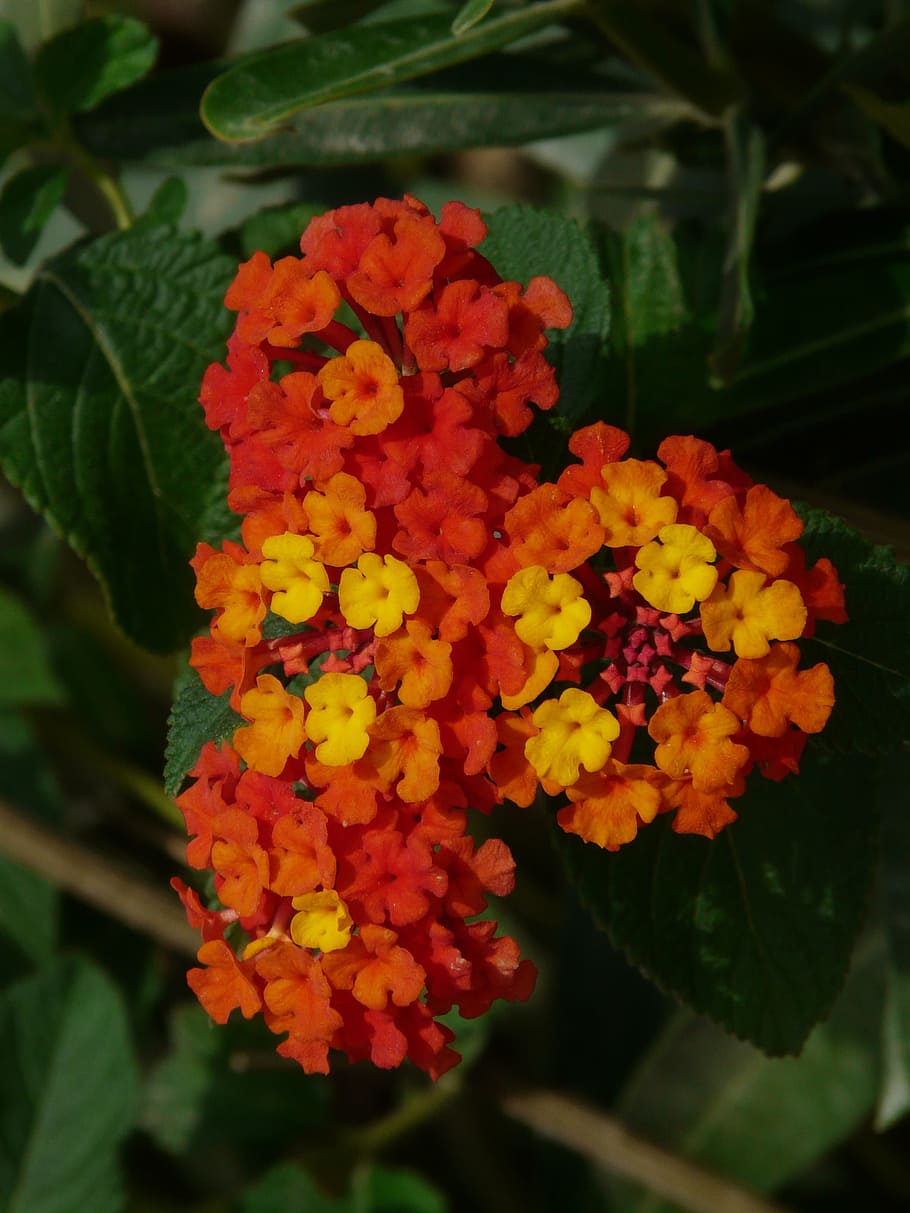
Scientific Name :- Lantana Camera.
Lantana is a genus of about 150 species of perennial flowering plants in the verbena family, Verbenaceae. They are native to tropical regions of the Americas and Africa but exist as an introduced species in numerous areas, especially in the Australian-Pacific region, South and Northeastern part of India.
3. Hibiscus.

Scientific Name :- Hibiscus Rosa sinensis.
Hibiscus is a genus of flowering plants in the mallow family, Malvaceae. The genus is quite large, comprising several hundred species that are native to warm temperate, subtropical and tropical regions throughout the world. Member species are renowned for their large, showy flowers and those species are commonly known simply as "hibiscus", or less widely known as rose mallow. Other names include hardy hibiscus, rose of sharon, and tropical hibiscus.
4. Bougainvillea.

Scientific Name :- Bougainvillea.
Bougainvillea is a genus of thorny ornamental vines, bushes, and trees belonging to the four o' clock family, Nyctaginaceae. It is native to eastern South America, found from Brazil, west to Peru, and south to southern Argentina. Different authors accept from 4 to 18 species in the genus. The inflorescence consists of large colourful sepal-like bracts which surround three simple waxy flowers
5. Ixora.
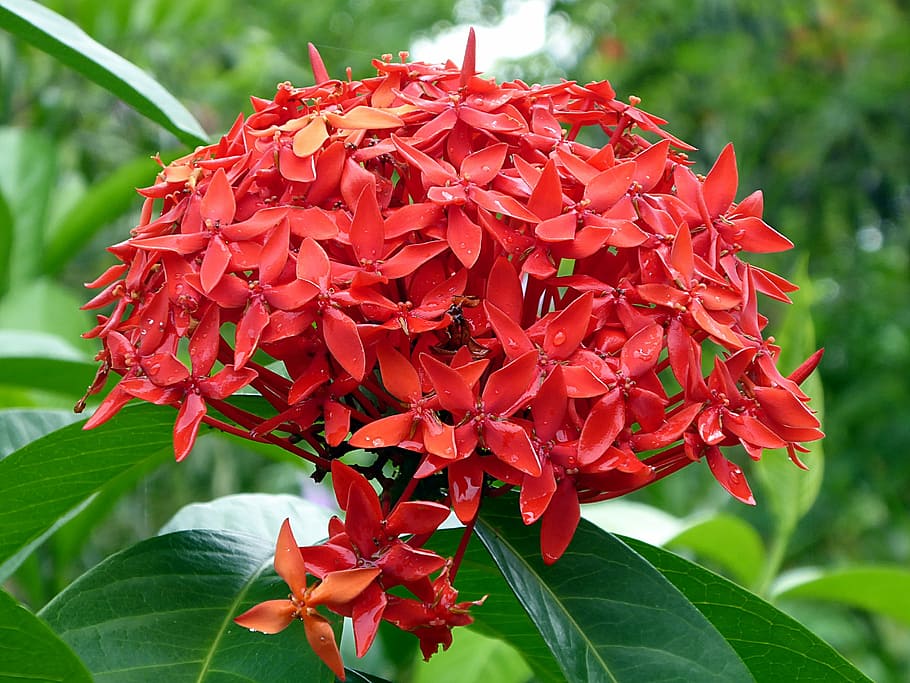
Scientific name :- Ixora coccinea.
Ixora is Also known as Jungle Geraniums, Ixoras are small tropical shrubs that will reward you with beautiful clusters of flowers in bright red with very little care. Perfect for balcony gardens, these hardy plants need full sun and very little space to grow. The flowers bloom in a tight ball like cluster of tiny blooms that attract hummingbirds, butterflies, and bees with their fragrance
6. Periwinkle.
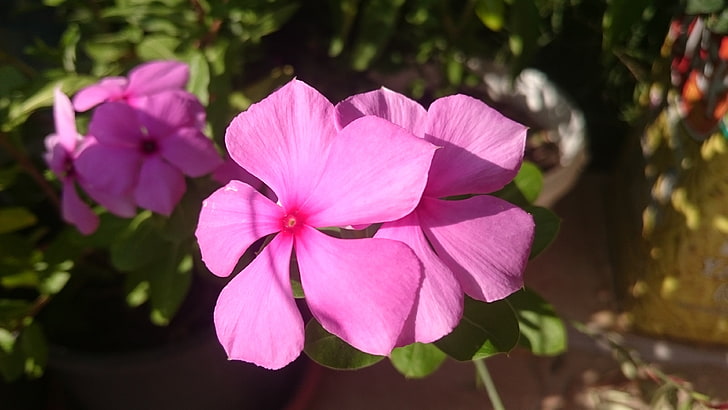
Scientific name :- Catharanthus roseus.
Periwinkle is an evergreen subshrub or herbaceous plant growing 1 m (39 in) tall. The leaves are oval to oblong, 2.5–9 cm (1.0–3.5 in) long and 1–3.5 cm (0.4–1.4 in) broad, glossy green, hairless, with a pale midrib and a short petiole 1–1.8 cm (0.4–0.7 in) long; they are arranged in opposite pairs. The flowers are white to dark pink with a darker red centre, with a basal tube 2.5–3 cm (1.0–1.2 in) long and a corolla 2–5 cm (0.8–2.0 in) diameter with five petal-like lobes. The fruit is a pair of follicles 2–4 cm (0.8–1.6 in) long and 3 mm (0.1 in) broad.
7. Jasmine.
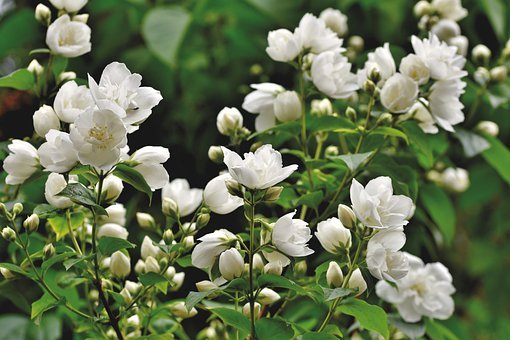
Scientific name :- Jasminum.
jasmine, (genus Jasminum), also spelled jessamine, genus of about 200 species of fragrant-flowered shrubs and vines of the olive family (Oleaceae). The plants are native to tropical and to some temperate areas of the Old World. Several are cultivated as ornamentals.Common jasmine, or poet’s jasmin(Jasminum officinale), native to Iran, produces fragrant white flowers that are the source of attar of jasmine used in perfumery.
8. Marigold.
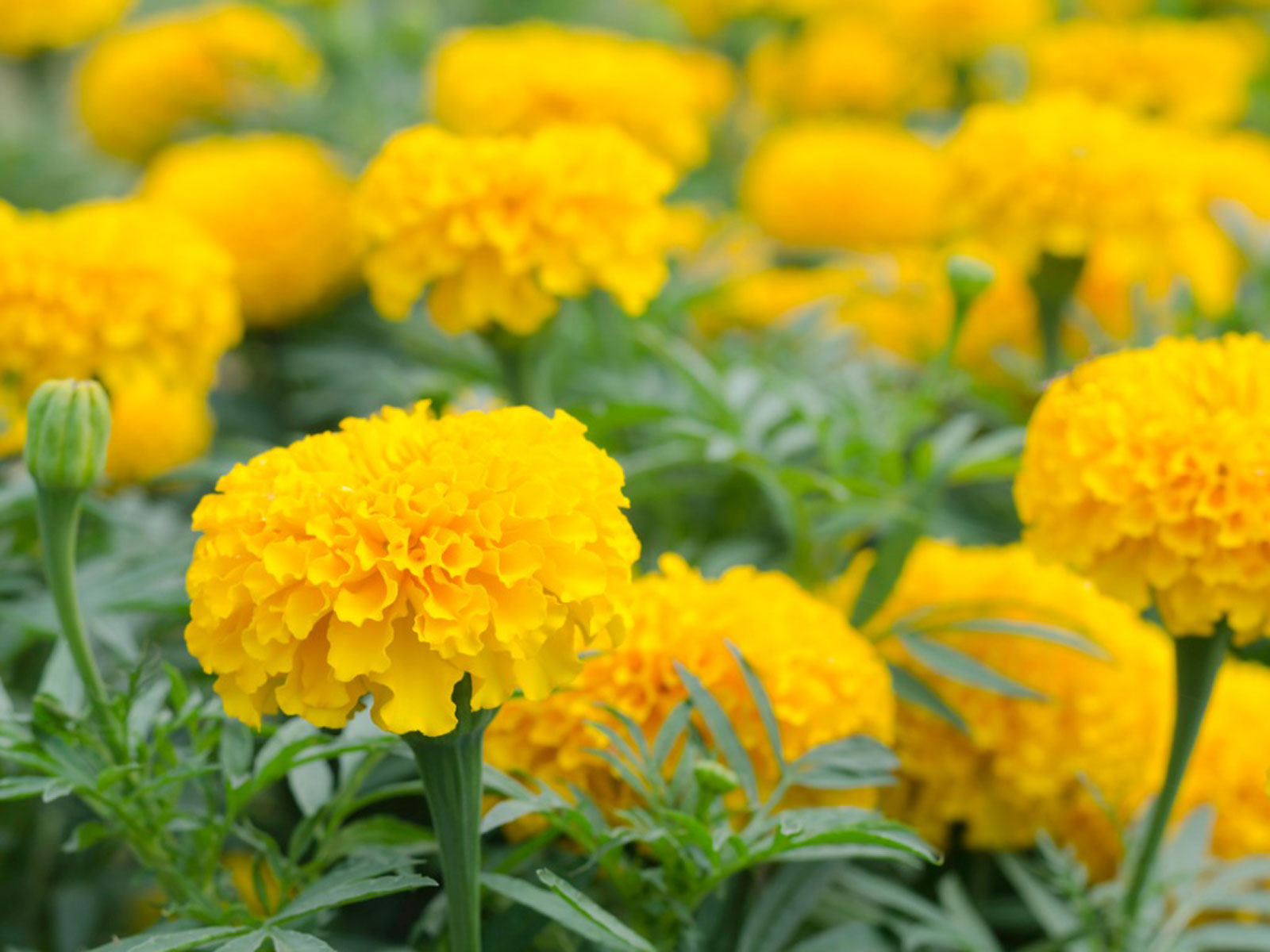
Scientific Name :- Tagetes.
Marigold is one of the most important flowering annuals cultivated in India. It has gained popularity on account of its easy culture and wide adaptability, wide attractive colours, shape, size and good keeping quality. The cultivated marigold species are mainly two. Those are: African Marigold – Tagetes erecta and French Marigold – Tagetes patula.
9. Frangipani.
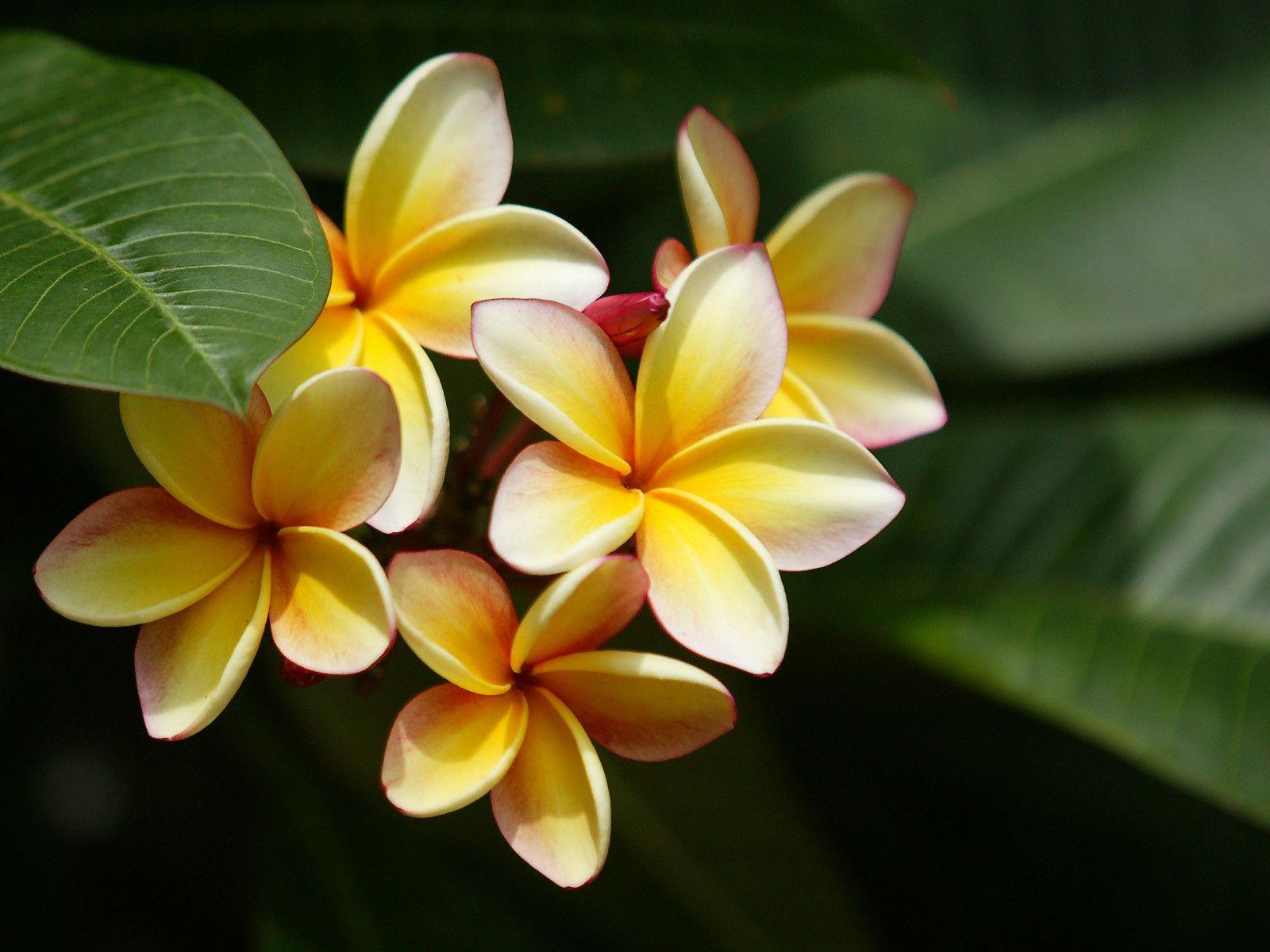
Scientific Name :- plumeria.
Plumeria flowers are most fragrant at night in order to lure sphinx moths to pollinate them. The flowers yield no nectar, however, and simply trick their pollinators. The moths inadvertently pollinate them by transferring pollen from flower to flower in their fruitless search for nectar. Insects or human pollination can help create new varieties of plumeria. Plumeria trees from cross pollinated seeds may show characteristics of the mother tree or their flowers might just have a totally new look.
10. Nettlespurges
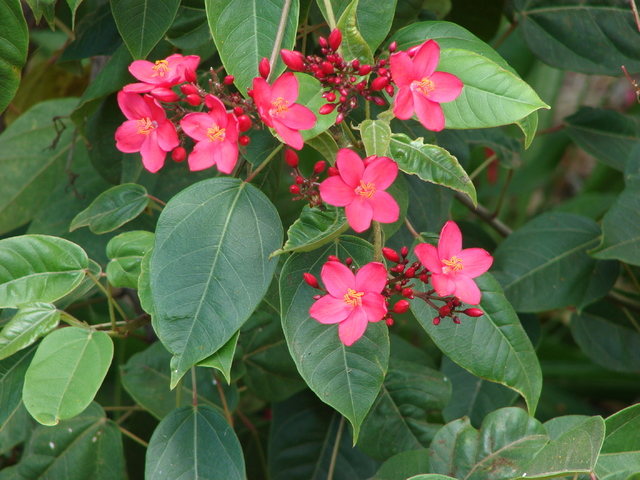
Scientific Name :- Jatropha.
Jatropha is a genus of flowering plants in the spurge family, Euphorbiaceae. The name is derived from the Greek words ἰατρός, meaning "physician", and τροφή, meaning "nutrition", hence the common name physic nut. Another common name is nettlespurge.
Indian garden plants are just like their country, diverse and rich in so many ways. Flowering plants make your garden a colorful delight to retreat to with a book or a cup of tea. Flowers aren't just beautiful, some blooms have a cultural or religious significance too. Here are best flowering plants in india
1. Rose.

Scientific Name:- Rosa. A rose is a woody perennial flowering plant of the genus Rosa, in the family Rosaceae, or the flower it bears. There are over three hundred species and tens of thousands of cultivars. They form a group of plants that can be erect shrubs, climbing, or trailing, with stems that are often armed with sharp prickles.
2. Lantana.

Scientific Name :- Lantana Camera. Lantana is a genus of about 150 species of perennial flowering plants in the verbena family, Verbenaceae. They are native to tropical regions of the Americas and Africa but exist as an introduced species in numerous areas, especially in the Australian-Pacific region, South and Northeastern part of India.
3. Hibiscus.

Scientific Name :- Hibiscus Rosa sinensis. Hibiscus is a genus of flowering plants in the mallow family, Malvaceae. The genus is quite large, comprising several hundred species that are native to warm temperate, subtropical and tropical regions throughout the world. Member species are renowned for their large, showy flowers and those species are commonly known simply as "hibiscus", or less widely known as rose mallow. Other names include hardy hibiscus, rose of sharon, and tropical hibiscus.
4. Bougainvillea.

Scientific Name :- Bougainvillea. Bougainvillea is a genus of thorny ornamental vines, bushes, and trees belonging to the four o' clock family, Nyctaginaceae. It is native to eastern South America, found from Brazil, west to Peru, and south to southern Argentina. Different authors accept from 4 to 18 species in the genus. The inflorescence consists of large colourful sepal-like bracts which surround three simple waxy flowers
5. Ixora.

Scientific name :- Ixora coccinea. Ixora is Also known as Jungle Geraniums, Ixoras are small tropical shrubs that will reward you with beautiful clusters of flowers in bright red with very little care. Perfect for balcony gardens, these hardy plants need full sun and very little space to grow. The flowers bloom in a tight ball like cluster of tiny blooms that attract hummingbirds, butterflies, and bees with their fragrance
6. Periwinkle.

Scientific name :- Catharanthus roseus. Periwinkle is an evergreen subshrub or herbaceous plant growing 1 m (39 in) tall. The leaves are oval to oblong, 2.5–9 cm (1.0–3.5 in) long and 1–3.5 cm (0.4–1.4 in) broad, glossy green, hairless, with a pale midrib and a short petiole 1–1.8 cm (0.4–0.7 in) long; they are arranged in opposite pairs. The flowers are white to dark pink with a darker red centre, with a basal tube 2.5–3 cm (1.0–1.2 in) long and a corolla 2–5 cm (0.8–2.0 in) diameter with five petal-like lobes. The fruit is a pair of follicles 2–4 cm (0.8–1.6 in) long and 3 mm (0.1 in) broad.
7. Jasmine.

Scientific name :- Jasminum. jasmine, (genus Jasminum), also spelled jessamine, genus of about 200 species of fragrant-flowered shrubs and vines of the olive family (Oleaceae). The plants are native to tropical and to some temperate areas of the Old World. Several are cultivated as ornamentals.Common jasmine, or poet’s jasmin(Jasminum officinale), native to Iran, produces fragrant white flowers that are the source of attar of jasmine used in perfumery.
8. Marigold.

Scientific Name :- Tagetes. Marigold is one of the most important flowering annuals cultivated in India. It has gained popularity on account of its easy culture and wide adaptability, wide attractive colours, shape, size and good keeping quality. The cultivated marigold species are mainly two. Those are: African Marigold – Tagetes erecta and French Marigold – Tagetes patula.
9. Frangipani.

Scientific Name :- plumeria. Plumeria flowers are most fragrant at night in order to lure sphinx moths to pollinate them. The flowers yield no nectar, however, and simply trick their pollinators. The moths inadvertently pollinate them by transferring pollen from flower to flower in their fruitless search for nectar. Insects or human pollination can help create new varieties of plumeria. Plumeria trees from cross pollinated seeds may show characteristics of the mother tree or their flowers might just have a totally new look.
10. Nettlespurges

Scientific Name :- Jatropha. Jatropha is a genus of flowering plants in the spurge family, Euphorbiaceae. The name is derived from the Greek words ἰατρός, meaning "physician", and τροφή, meaning "nutrition", hence the common name physic nut. Another common name is nettlespurge.


























Login to your account or create a new account to post comments!